Time:2025-08-18
Custom LED neon bar signs are more than just decorative elements—they are the visual cornerstone of a bar’s identity, blending nostalgia with modern technology to create memorable impressions. Unlike generic signage, these bespoke creations are tailored to reflect a bar’s unique personality, whether it’s a sleek cocktail lounge, a rustic pub, or a vibrant tiki bar. They combine the warm, inviting glow of traditional neon with the durability, energy efficiency, and customization of LED technology, making them ideal for the demanding environment of bars—where aesthetics, visibility, and longevity are key. From spelling out the bar’s name in a signature font to featuring iconic motifs (like a martini glass or a vintage beer mug), custom LED neon bar signs draw patrons in, reinforce brand recognition, and set the mood for the entire space. This article explores their design process, customization options, material advantages, installation considerations, and impact on customer experience, showcasing why they are essential for any bar looking to stand out.
Crafting a custom LED neon bar sign is a collaborative journey that transforms a bar’s vision into a luminous reality, with each step focused on capturing its essence. Conceptualization begins with understanding the bar’s brand story, target audience, and aesthetic. A speakeasy-inspired bar might opt for a vintage font with Art Deco flourishes, while a beach-themed bar could incorporate palm trees or waves into the design. Designers work closely with bar owners to translate these ideas into sketches, often creating multiple iterations to refine details like letter curvature, symbol placement, and overall composition. This phase also considers practical factors, such as the sign’s intended location (window, wall, or outdoor patio) and how it will interact with existing decor.
Digital rendering turns sketches into precise blueprints. Using design software, artists create detailed digital models that show how the sign will look when illuminated, including color variations, light intensity, and dimensionality. This allows bar owners to visualize the final product and make adjustments—like tweaking a letter’s thickness or changing a symbol’s size—before production begins. For complex designs (e.g., a sign with intertwined text and graphics), renderings help ensure that all elements harmonize and that the sign remains visually balanced from all angles.
Material selection is guided by both aesthetics and functionality. The LED neon tubes are chosen for their color accuracy and brightness, with options ranging from vivid primaries to soft pastels that complement the bar’s color scheme. The backing material—often metal, acrylic, or wood—adds structural support and can be customized to match the bar’s decor: a rustic pub might choose reclaimed wood, while a modern lounge could opt for sleek black acrylic. These materials are also selected for durability, ensuring the sign withstands the humidity, occasional spills, and heavy foot traffic common in bars.
Prototyping and refinement provide a final check before full production. A small-scale physical prototype or high-resolution digital mockup is created to test how the sign looks in different lighting conditions (daylight vs. evening) and from various distances. Bar owners can approve the prototype or request final tweaks, such as adjusting the glow intensity or refining a symbol’s outline. This step ensures that the final sign aligns perfectly with the bar’s vision and functions seamlessly in its intended space.
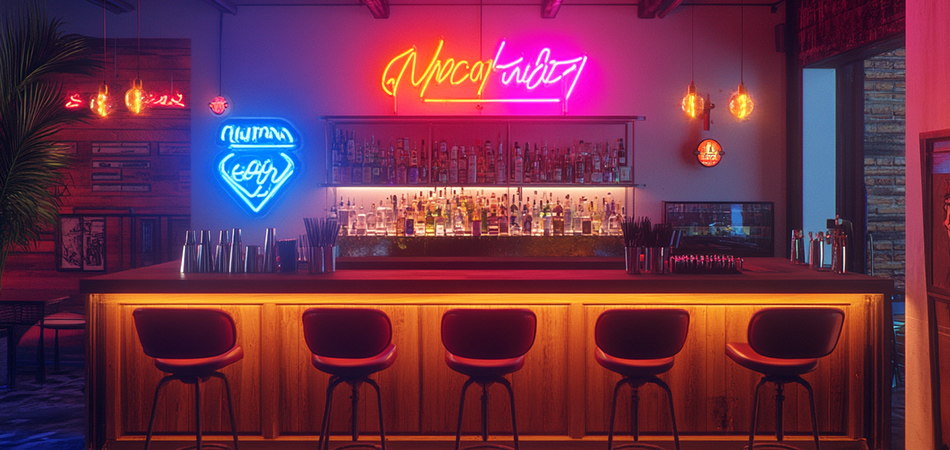
The versatility of custom LED neon bar signs lies in their ability to be personalized down to the smallest detail, ensuring they reflect a bar’s unique character. Font and typography are powerful tools for conveying personality. Bold, blocky fonts exude confidence, perfect for sports bars or dive bars, while elegant cursive fonts add sophistication to cocktail lounges. Custom typography—like a font designed exclusively for the bar—can become a signature element, making the sign instantly recognizable. Letter spacing, thickness, and curvature are adjusted to enhance readability from the street while maintaining visual appeal up close.
Color psychology plays a key role in setting the bar’s mood. Warm colors like red and orange evoke energy and excitement, ideal for lively bars with dance floors, while cool blues and greens create a calming, relaxed atmosphere suited to wine bars or lounges. Multi-color signs can highlight specific elements: a bar named "The Blue Parrot" might use blue for the text and green for a parrot graphic, creating visual contrast. Some signs feature color-changing LEDs, allowing the bar to switch hues for events (e.g., green for St. Patrick’s Day) or to match seasonal decor.
Incorporated symbols and motifs add layers of meaning and visual interest. A whiskey bar might include a small barrel or glass in its sign, while a tiki bar could feature pineapples or tiki masks. These elements are integrated seamlessly with the text, often wrapping around letters or filling negative space to create a cohesive design. Symbols can also tell a story: a neighborhood bar might include a local landmark in its sign, fostering a sense of community and familiarity among patrons.
Size and shape are customized to fit the bar’s space and visibility needs. A small corner bar might opt for a compact, vertical sign that fits above the door, while a large nightclub could commission an oversized horizontal sign spanning the length of its facade. Irregular shapes—like a sign cut to resemble a beer bottle or a crescent moon—add uniqueness, making the bar stand out in a crowded nightlife scene. The sign’s proportions are balanced to ensure it’s readable from a distance without overwhelming the space.
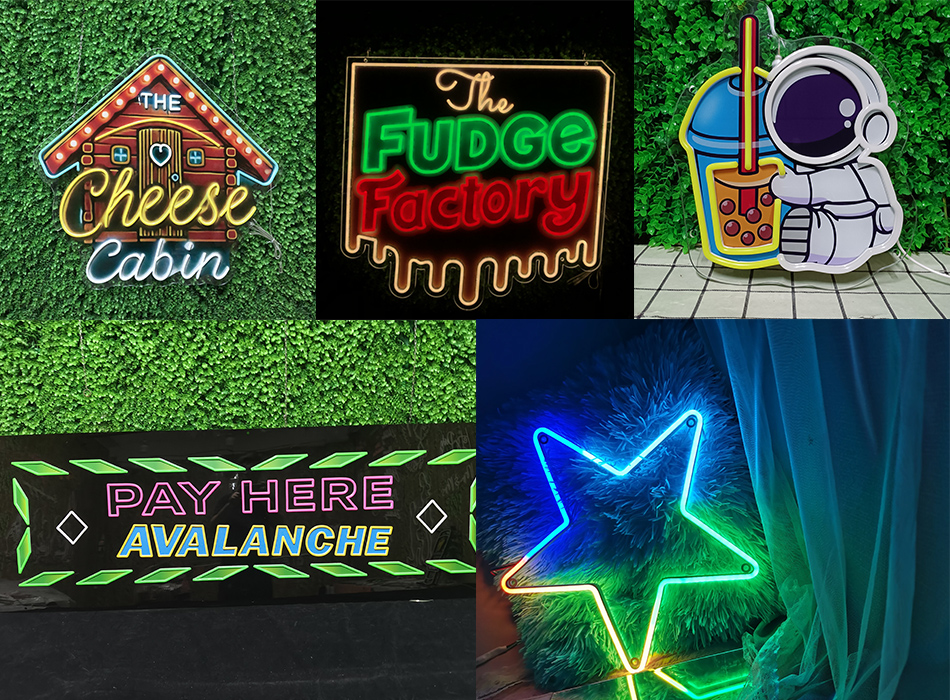
Custom LED neon bar signs are engineered with materials that withstand the unique challenges of bar settings, combining durability with visual appeal. LED neon tubes offer significant advantages over traditional glass neon. They are shatterproof, making them resistant to accidental bumps or spills—critical in busy bars where staff and patrons move quickly. LED tubes also operate at a lower temperature, reducing the risk of burns if someone touches the sign. Unlike glass neon, which requires fragile transformers, LED neon runs on low voltage, making installation safer and reducing energy costs—important for bars that keep signs lit for 12+ hours a day.
Backing materials are chosen for strength and style. Metal backings (like aluminum or steel) provide rigidity, ensuring the sign remains flat even in humid environments, while being lightweight enough for easy installation. Acrylic backings offer a sleek, modern look and can be clear or colored to enhance the sign’s glow. Wood backings, often stained or painted, add warmth and texture, complementing rustic or craft bar aesthetics. All backings are sealed to resist moisture, preventing warping or rusting from spilled drinks or condensation.
Weather resistance extends the sign’s versatility to outdoor spaces. For patio bars or outdoor seating areas, signs are coated with waterproof sealants and fitted with weatherproof LED components that withstand rain, snow, and UV exposure. This allows bars to maintain brand consistency indoors and out, with outdoor signs retaining their color and brightness even after years of exposure to the elements.
Energy efficiency is a practical benefit for bar owners. LED neon uses a fraction of the electricity of traditional neon or fluorescent signs, lowering monthly utility bills. Many signs also include dimming capabilities, allowing bars to reduce brightness during off-peak hours or adjust for different events (e.g., dimmer for a private party, brighter for a busy weekend). This efficiency doesn’t compromise performance—LED neon produces a vibrant, consistent glow that rivals traditional neon.
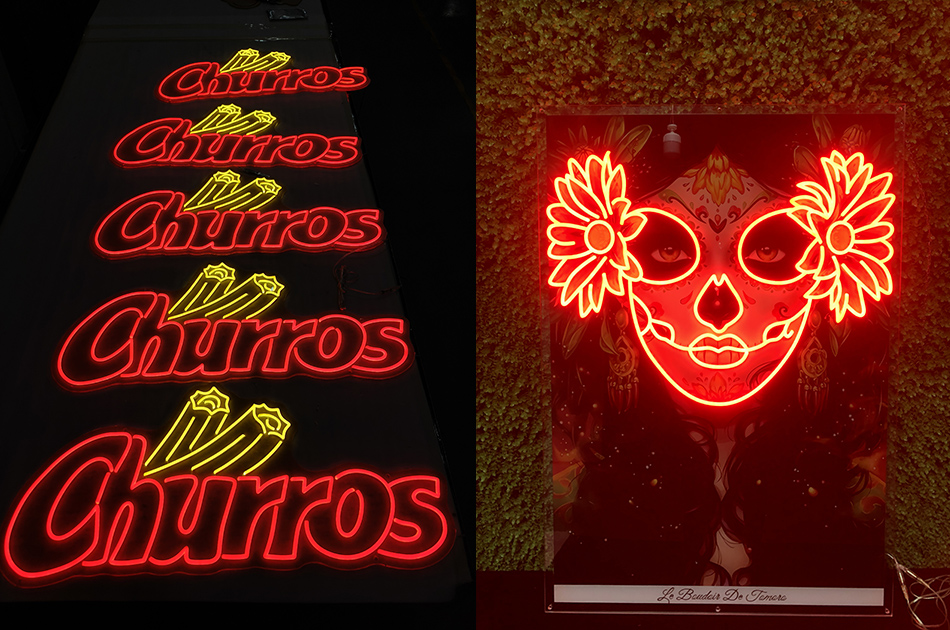
Installing a custom LED neon bar sign requires careful planning to ensure it enhances visibility, complements the space, and operates safely. Location analysis is the first step, considering factors like street visibility, customer flow, and existing architecture. A sign intended to attract passersby might be mounted above the entrance or in a large window, angled to catch the eye of pedestrians and drivers. Indoor signs—like those behind the bar or above a stage—are placed to draw attention from all areas of the bar, ensuring every patron sees and remembers the branding.
Mounting options are tailored to the sign’s size and the bar’s structure. Lightweight signs can be hung with chains or brackets, creating a floating effect that adds depth to the space. Heavier signs are secured with wall anchors or bolts, ensuring stability even in high-traffic areas. For outdoor signs, mounting hardware is rust-resistant, and the sign is angled to prevent water pooling on its surface. Some bars opt for freestanding signs, placed near the entrance or in outdoor seating areas, offering flexibility to reposition as needed.
Electrical integration prioritizes safety and aesthetics. The sign’s low-voltage power supply is hidden from view, often routed through walls or behind shelves to avoid cluttering the space. For bars with existing lighting systems, the sign can be connected to a timer or smart switch, allowing it to turn on automatically at opening time and off at closing. Electricians ensure all wiring meets safety standards, with waterproof connections for outdoor signs and heat-resistant casing for signs near stoves or grills (in bars with kitchen service).
Lighting harmony ensures the sign complements rather than competes with other lights in the bar. Dimmer switches allow the sign’s brightness to be adjusted relative to ambient lighting—brighter in dimly lit lounges, softer in bars with overhead lighting. The sign’s color is also considered in relation to other decor: a red sign might be paired with warm accent lights to create cohesion, while a blue sign could contrast with amber lighting for a striking effect.
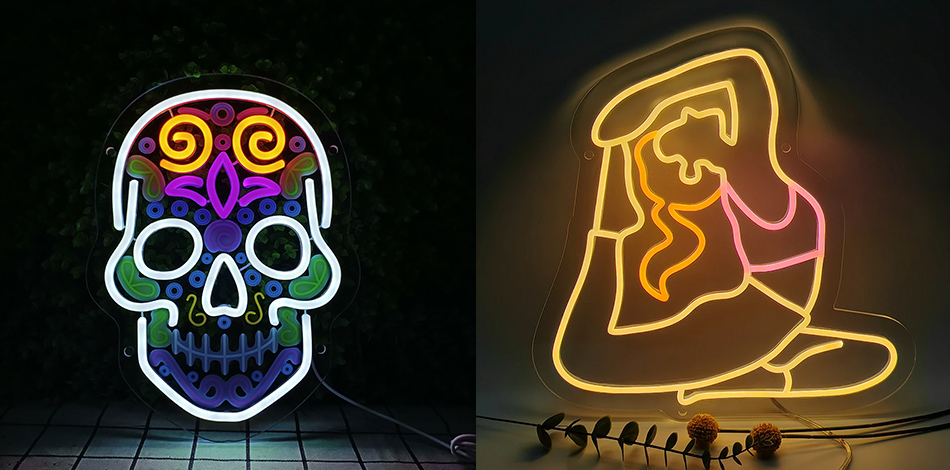
Custom LED neon bar signs play a pivotal role in shaping how patrons perceive and interact with the bar, enhancing every aspect of their experience. First impressions are formed the moment a patron sees the sign, whether from the street or upon entering. A well-designed sign signals attention to detail, making patrons more likely to enter and explore. For example, a sign with a playful font and vibrant colors might attract a younger crowd, while a sleek, minimalist sign could appeal to professionals seeking a sophisticated vibe. The sign sets expectations, hinting at the bar’s atmosphere, drink offerings, and overall personality.
Ambiance enhancement transforms the bar’s mood. The soft, diffused glow of LED neon creates a warm, inviting atmosphere that encourages patrons to relax and stay longer. Signs behind the bar illuminate the drink display, making bottles and glassware sparkle and enticing customers to order. In outdoor areas, a neon sign can turn a simple patio into a cozy, intimate space after dark, extending the bar’s usable hours and increasing revenue.
Social media appeal turns patrons into brand ambassadors. Custom LED neon signs are highly photogenic, with their vibrant colors and unique designs making them popular backdrops for photos. Patrons often share these photos on social media, tagging the bar and exposing it to their followers. A distinctive sign can become a "must-take" photo spot, driving foot traffic from customers eager to capture the perfect shot. This organic marketing is invaluable, especially for new bars looking to build a customer base.
Brand loyalty is fostered through consistent, memorable branding. A custom sign becomes a visual symbol of the bar, making it easier for patrons to recall and recommend. Regulars come to associate the sign with positive experiences—great drinks, friendly service, fun nights out—creating an emotional connection to the brand. Over time, the sign becomes a landmark in the community, with locals saying, "Meet me at the bar with the neon parrot sign," reinforcing the bar’s place in the neighborhood.
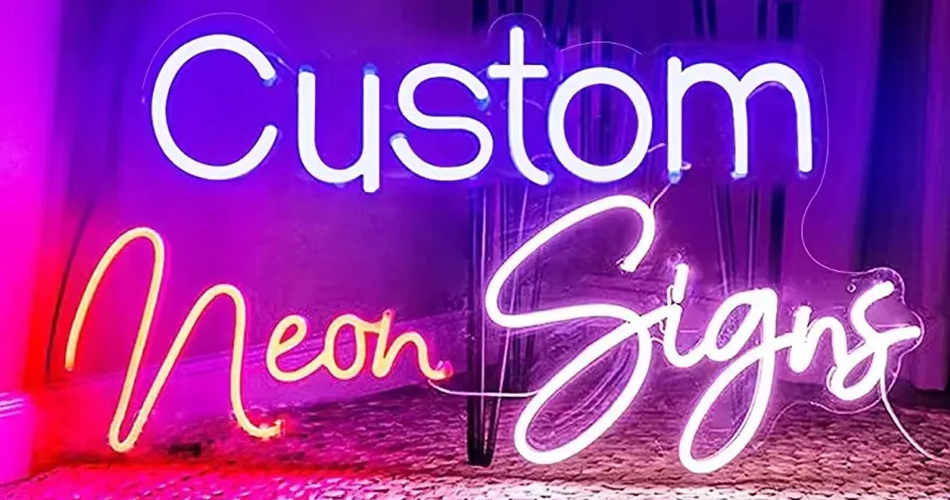
Custom LED neon bar signs require minimal maintenance, but proactive care ensures they remain a focal point for years. Regular cleaning prevents dust and grime from dulling the sign’s glow. The LED tubes and backing can be wiped down with a soft, dry cloth or a slightly damp microfiber cloth—avoiding harsh cleaners that could damage the finish. For outdoor signs, a monthly rinse with mild soap and water removes dirt, pollen, and bird droppings, preserving visibility.
Inspecting connections ensures consistent performance. Loose wires or connectors can cause flickering or dim spots, so staff should check these periodically (preferably during closing hours). Tightening connections or replacing worn-out connectors resolves most issues, and many signs are designed with accessible panels to simplify this process. For color-changing signs, checking that the controller is functioning correctly ensures hues transition smoothly.
Addressing damage promptly prevents small issues from worsening. A cracked backing or a loose tube can be repaired quickly, often without replacing the entire sign. LED tubes have a long lifespan (tens of thousands of hours), but if one fails, it can be swapped out individually—unlike traditional neon, which requires replacing entire sections. Many manufacturers offer warranties on parts, reducing repair costs for bar owners.
Updating as needed keeps the sign fresh. While custom signs are designed to be timeless, bars may want to refresh their look after several years. This could involve updating the color scheme, adding a new symbol (e.g., to promote a new drink menu), or resizing the sign to fit a renovated space. The modular nature of LED neon makes these updates straightforward, allowing the bar to evolve while retaining its core branding.
The world of custom LED neon bar signs is evolving, with new trends reflecting changing consumer preferences and technological advancements. Retro nostalgia remains a strong influence, with many bars opting for signs that evoke the 1950s diner or 1980s arcade aesthetic—think bold fonts, neon pinks and blues, and classic motifs like jukeboxes or pinball machines. These signs tap into patrons’ fond memories of past eras, creating a sense of comfort and familiarity.
Minimalist designs are gaining popularity among modern bars. Sleek, simple signs with clean lines and neutral colors (like white or soft gray) complement contemporary decor, allowing the bar’s other design elements to shine. These signs often feature negative space and subtle lighting, proving that less can be more when it comes to making an impact.
Interactive elements are transforming static signs into engaging experiences. Some signs include sensors that light up when a patron walks by, while others sync with the bar’s music, changing color or brightness to match the beat. QR codes embedded in the sign allow patrons to scan and access the bar’s menu or social media, bridging the gap between physical and digital marketing.
Sustainable materials are becoming a priority for eco-conscious bars. Signs with backing made from reclaimed wood or recycled metal, paired with energy-efficient LEDs, appeal to patrons who value sustainability. Some manufacturers even offer carbon-neutral production processes, allowing bars to reduce their environmental footprint while enhancing their brand.
Custom LED neon bar signs are more than just signage—they are a bar’s visual voice, communicating its personality, attracting patrons, and creating lasting memories. By combining custom design with durable, energy-efficient materials, they offer a practical yet powerful way to differentiate a bar in a competitive market. Whether it’s a small neighborhood pub or a bustling nightclub, a well-crafted custom LED neon sign becomes an integral part of the bar’s identity, drawing in new customers and keeping regulars coming back.
As nightlife continues to evolve, these signs will remain a staple, adapting to new trends while retaining their core appeal: the ability to turn a space into a destination. For bar owners looking to make a statement, invest in their brand, and create an unforgettable atmosphere, a custom LED neon bar sign is more than an expense—it’s a key ingredient in the recipe for success.